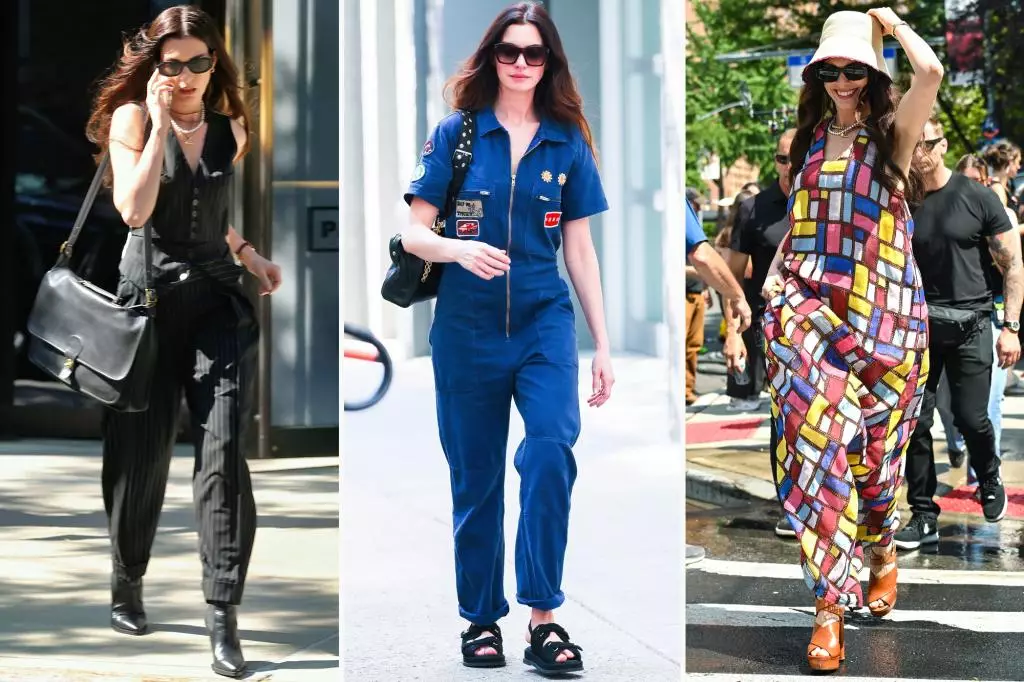After nearly two decades, the fashion world eagerly anticipates the return of “The Devil Wears Prada,” a film that not only propelled Meryl Streep’s unforgettable Miranda Priestly into cinematic history but also redefined how fashion is portrayed in mainstream media. The upcoming sequel promises to be not just a continuation of the story but an even more lavish showcase of couture and contemporary style. Filming in New York City has already sparked excitement among fashion enthusiasts, hinting that this new installment will uphold—and perhaps even elevate—the franchise’s reputation for runway-worthy aesthetics. The film’s release, slated for May 2026, is poised to set new standards in cinematic fashion storytelling, blending nostalgia with modern trends.
The Star-Studded and Style-Driven Ensemble
Reprising their roles from the original, Hathaway, Streep, Blunt, and Tucci demonstrate that the core cast’s chemistry remains intact. Their return suggests a seamless blend of character continuity and fresh narratives. Adding new faces like Justin Theroux and Rachel Bloom indicates a deliberate effort to diversify the cast and bring fresh energy to the story. Yet, amid the excitement over plot and characters, the focus on costume design is undeniable. While it remains uncertain whether Patricia Field, the legendary stylist behind the original film’s iconic looks, will return, the glimpses of wardrobe on set affirm that fashion will be front and center once again.
Fashion as a Narrative Device
What distinguishes “The Devil Wears Prada” from typical film fare is its masterful use of style to underscore character development and social commentary. The outfits spotted so far hint at a level of craftsmanship and expense that reaffirms fashion’s role as both art and statement. Hathaway’s character, Andy Sachs, has evolved from a fresh-faced intern into a polished, confident woman, and her wardrobe reflects this transformation. Her choice of luxury accessories—including a diamond-studded Bulgari ring, an exquisite Gabriela Hearst maxi dress, and designer sunglasses—exudes a sense of empowerment through decadence. Meanwhile, her practical yet chic footwear switch signifies a maturation of style—more functional but still luxurious.
Fashion Trends and Cultural Indicators
The outfits previewed from the set mirror broader fashion trends that continue to influence the industry. Mixing high-end labels like Chanel, Fendi, and Valentino with vintage finds and collaborations demonstrates a shifting landscape—where sustainability, nostalgia, and exclusivity coexist. Andy’s denim onesie from Re/Done’s collaboration with Ford is an example of how fashion is embracing playful innovation, blending utility with luxury. At the same time, her accessories serve as status symbols, reaffirming that in the world of high fashion, appearance is still a form of storytelling—an outward sign of confidence, ambition, and cultural capital.
The upcoming “The Devil Wears Prada 2” is shaping up to be more than just a film; it’s a celebration of fashion’s enduring power to influence and inspire. As the industry continues to evolve, the sequel promises to be a stylish mirror of contemporary culture, reminding us that fashion remains an essential, dynamic force.

